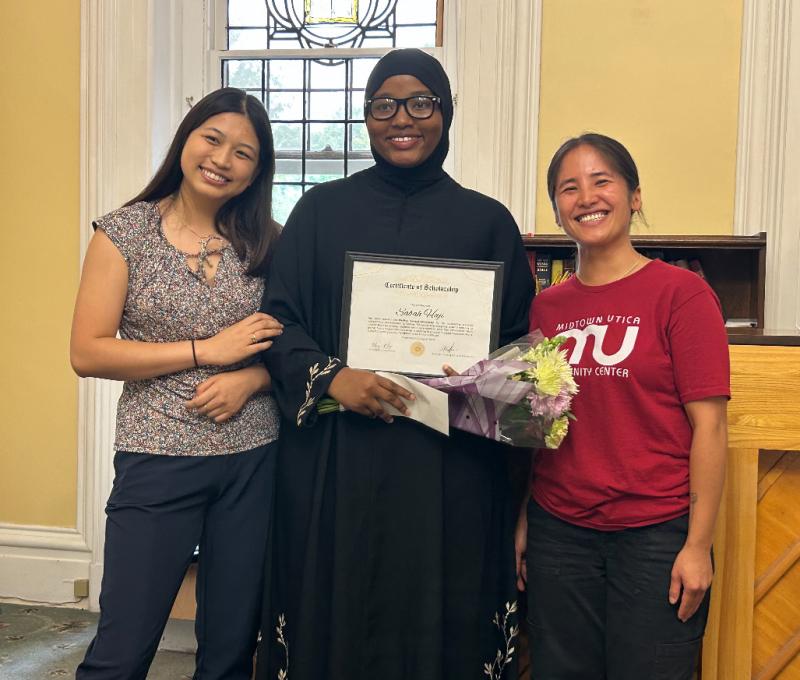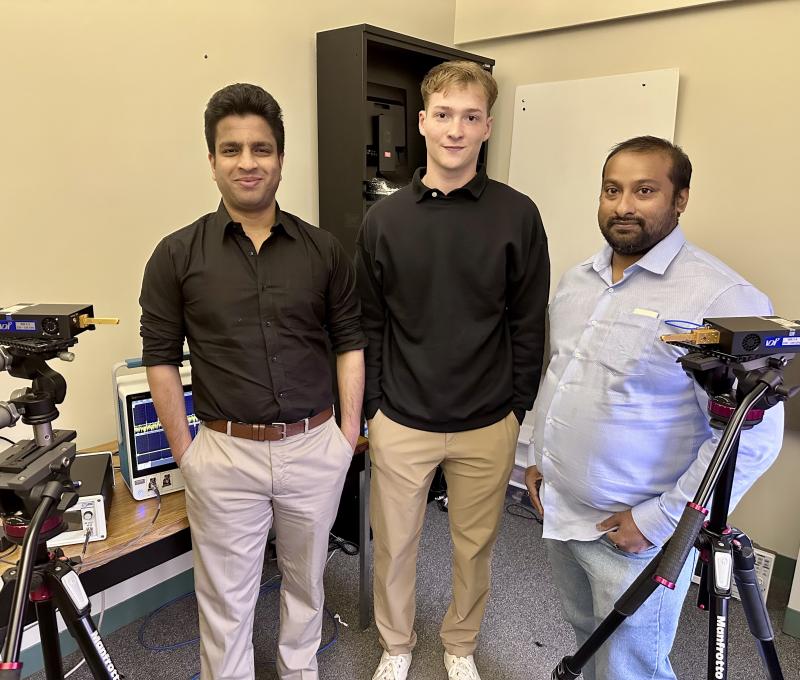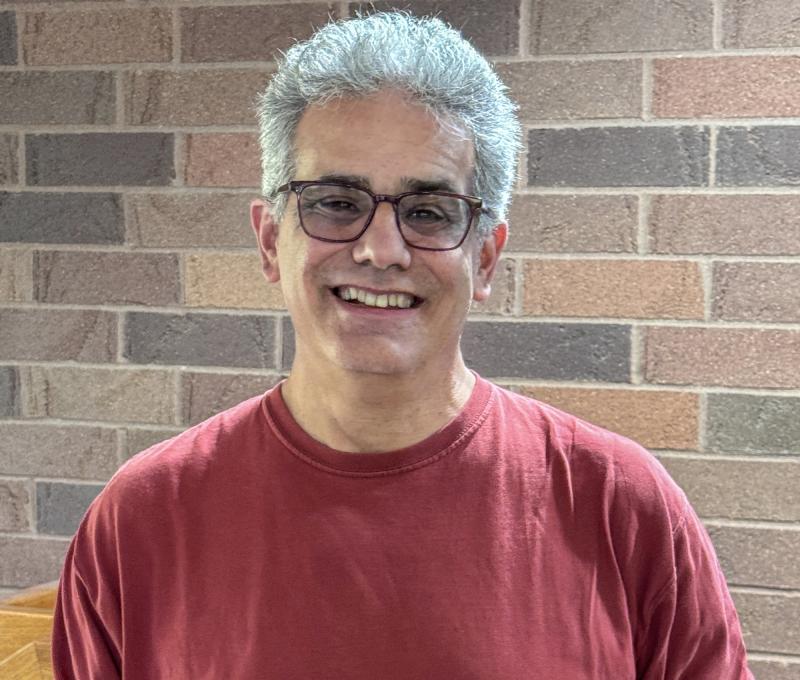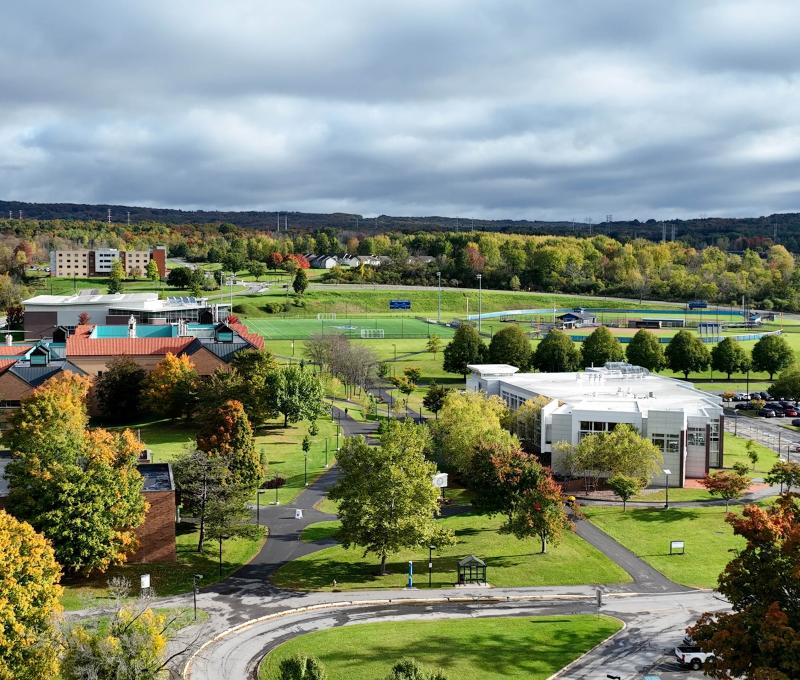Art of Ana Jofre chosen for downtown Utica banner initiative

For the past few years, downtown Utica has showcased its own business leaders, highlighting a number of business owners and executives via a series of banners hanging along Genesee Street.
This year, however, the artists of the Utica area are the ones that are taking center stage, and among them is SUNY Poly’s own Dr. Ana Jofre.
Funded by a New York Council of the Arts grant and the City of Utica, and coordinated by Michelle Truett, the initiative began hanging 32 new banners along Genesee Street on December 4, highlighting the work of artists that live, work, or have studios in Utica, including local high schools and students at Pratt Munson-Williams-Proctor Arts Institute.
“It’s what artists do,” Dr. Jofre says. “They add to the décor of their surroundings.”
Her banner features a photo of a marionette she calls Fuzzy Jofre.
“Fuzzy Jofre never learned enough math to know that a minor infraction does not equal infinity. I make life-sized marionettes that flirt with absurdity because the world is absurd. Art is, in part at least, about holding the mirror.”
Joining SUNY Poly in September 2017, she teaches art and creative technology, including classes in Creativity and Culture, which introduces students to the creative practice and provides a contextual survey of contemporary art and culture, as well as Intro to Web Design, which teaches HTML, CSS, and some basic JavaScript.
“I used to be a physics professor, but I became convinced that the important problems to work on are the cultural ones. For example, we have plenty of evidence on climate change, yet many people still aren’t convinced it’s real. For something tangible to happen, it seems more important to cultivate a culture of addressing the problem than to gather more evidence that it is happening,” she says.
She was doing research on molecular spectroscopy and teaching physics at the University of North Caroline in Charlotte and wasn’t convinced that her molecular spectroscopy measurements were making an impact on humanity.
“It’s hard to impact people’s everyday culture through teaching physics,” she says. “So I moved my career towards the arts and cultural analytics. Part of my work is art practice, the other part of my work is research-based cultural analytics and data visualization. I’m really interested in using data visualization and design to make data accessible and to help people better understand the cultural products they consume and their own cultural history.”








